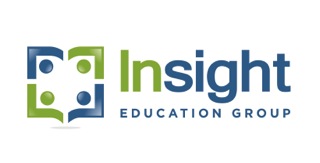Two education leaders provide practical ways for charter school boards to support and retain their leaders.
The job of today’s charter school leader is a herculean task. From taking on the responsibilities traditionally associated with running a school, such as discipline, budgeting, and academic performance, to responsibilities like fundraising and facilities procurement, charter leaders require a broad set of skills to be successful. And so, it isn’t surprising that the average annual turnover rate for charter school principals is significantly higher than the rate for traditional public school principals.
While there are many factors that contribute to charter principal turnover, one factor stands out: many charter school boards, which hold the charter and are responsible for the overall success of the schools, fail to put in place strong systems to ensure that the schools are run effectively—and to provide the supports leaders need to be successful and want to stay.
Leaders from two national education leadership support organizations have been examining this issue closely for a number of years. Shereen Williams, chief of governance and recruitment strategy at Charter Board Partners, and Dr. Anissa Rodriguez Dickerman, senior vice president of strategic partnerships with Insight Education Group, share their expertise and lessons learned from their work in charter schools nationwide.
Three Pitfalls Boards Should Avoid
Charter school boards are responsible for the leadership of the school in several different capacities, including finding ways to collaboratively work with their leaders to address the needs of the school and to ensure that things are run effectively. However, boards can inadvertently fall into common pitfalls that can lead to lack of progress and frustration for everyone—and ultimately lead to the leader leaving.
Pitfall #1: Lack of diversity on the board
In her work with charter boards across the country, Williams has observed that most boards don’t include a lot of diversity, including people of color, young people, or women.
“As research has repeatedly supported, diverse groups tend to make better decisions on average,” says Williams. “In the case of a board, having the perspectives of diverse members helps to avoid public relations crises based on decisions made by board members who are out-of-touch with the needs of the schools’ populations. Healthy boards need the right people with the right skills and variety of perspectives, as well as community input.”
In addition, Williams adds, “racially diverse boards are more likely to attract and retain leaders of color, who are more likely to attract and retain teachers of color, who are more likely to have high expectations for their students.”
Dickerman sees boards often ignore the need for a diversity of professional skills, too. “Very often we see that boards are comprised of members who are placed there to lend their names or credibility, but they’re generally not really prepared or experienced with trying to carry out the hard work of what it takes to govern a startup school if it’s a brand-new school.”
She goes on to recommend that “a charter board that’s really effective can’t be comprised of only educators. The board should be comprised of individuals who have varying levels of educational management experience. Primarily, they need to understand the skills that the school leaders and staff may not have, such as strategic financial skills.”
Pitfall #2: Not aligning resources to organizational needs
A breakdown between the real and perceived needs of the board and its leaders often results in a mismanagement of resources and failure to meet the organization’s needs. A mismatch in the way schools and boards operate is often the root cause of the challenge. As Dickerman explains, “Boards typically operate at the policy level, and schools operate at the initiative level. It’s important to find organic ways for those to marry.”
She also has specific experience in helping schools address this challenge. “The way that we support that is by helping [schools] to engage in a multi-stakeholder, thoughtful strategic planning process.” This is a process in which Dickerman works with school leaders and board members to clarify the mission and beliefs of the school organization. Once this is set, she says, “leaders can more easily review the expenditure of resources and ensure that these resources are allocated in a way that aligns with the school’s vision.”
Pitfall #3: Allowing crises to surprise them
Williams believes that full transparency and a culture of “no surprises” is necessary, but not always the norm for school boards.
Williams notes a common storyline in the case of schools that fail—and attract lots of public attention. “When you dig into the details, the question always is, ‘Well how did the board not know?’ There have been many high-profile stories of school crises that were unexpected and avoidable had the board been paying attention: the organization ran its bank accounts down to zero or enrollment declined so much that the school couldn’t make payroll.” Williams believes that all of these issues stem from a lack of quality communication and accountability systems between the board and the leader.
She believes that this type of surprise disaster can be avoided if school leaders and board members develop strong relationships based on transparent communication, including a standing weekly or biweekly meeting between the board chair and school leader. In addition, dashboards can be helpful tools for staying abreast of key data about the health of the school.
Steps for Supporting Leaders
In addition to creating strong board systems, Williams and Dickerman recommend two direct steps that school boards can take to make leaders feel supported—and more likely to remain as leaders.
Step 1: Provide personalized support, including coaching and mentorship, to facilitate the leader’s success.
Charter school leaders have a variety of responsibilities that fall outside the traditional purview of a school principal. Boards must be able to provide personalize support based on the school leader’s specific needs. “A traditional principal at a district public school may not have ever had to negotiate a lease,” Williams notes, “A charter school leader oftentimes will have to negotiate a lease, secure facilities, and other similar things.”
Increasingly, schools are turning to a solution commonly associated with the private sector: executive coaching. Dickerman explains that “in the executive coaching and strategic-planning work, we focus on trying to help organizations develop a strategic plan. Often, we find that among the board and the school leaders, there are different interpretations for who the organization serves, what the mission and vision are, what the academic focus areas should be. Executive coaching support helps organizations to align their priorities and structure a plan around those for optimal success.” This type of personalized mentorship can help school leaders improve areas of deficiency and maximize personal strengths.
Step 2: Evaluate and hold the school leader accountable.
Boards must guide school leaders by clearly articulating goals and tracking progress towards those goals. “You want to know how they manage talent, are they a great instructional leader, how they’re managing resources,” Williams says.
In the end, both school boards and school leaders are united in a shared mission: to help the organization thrive and improve student learning. Through developing shared values, improving communication, and using smart systems, each of the stakeholders can help the other to succeed.
Gerard Dawson is an English and journalism teacher at Hightstown (NJ) High School, the author of Hacking Literacy: 5 Ways to Turn Any Classroom into a Culture of Readers, and a contributor to The Best Lesson Series: Literature. Follow him on Twitter: @GerardDawson3.



